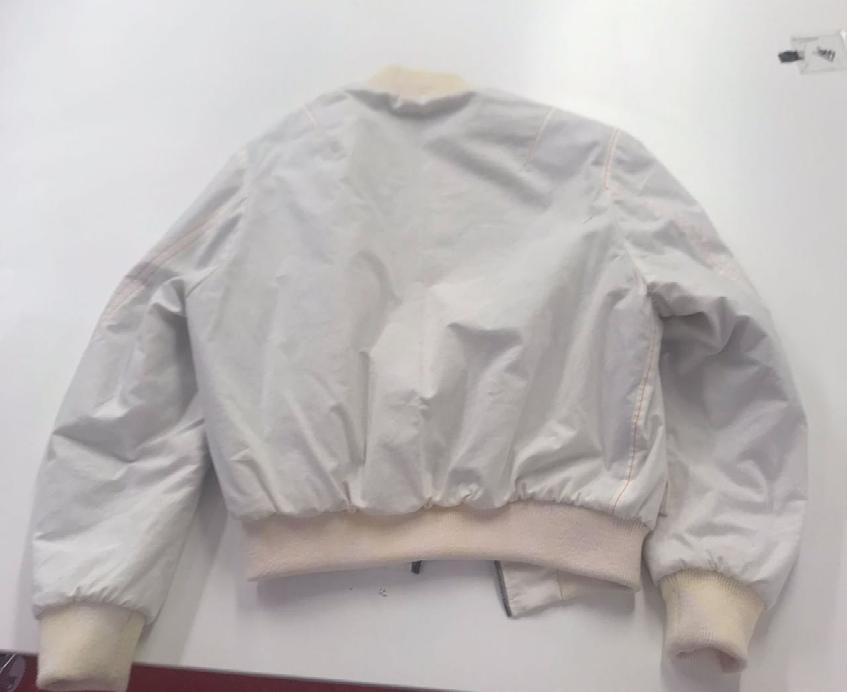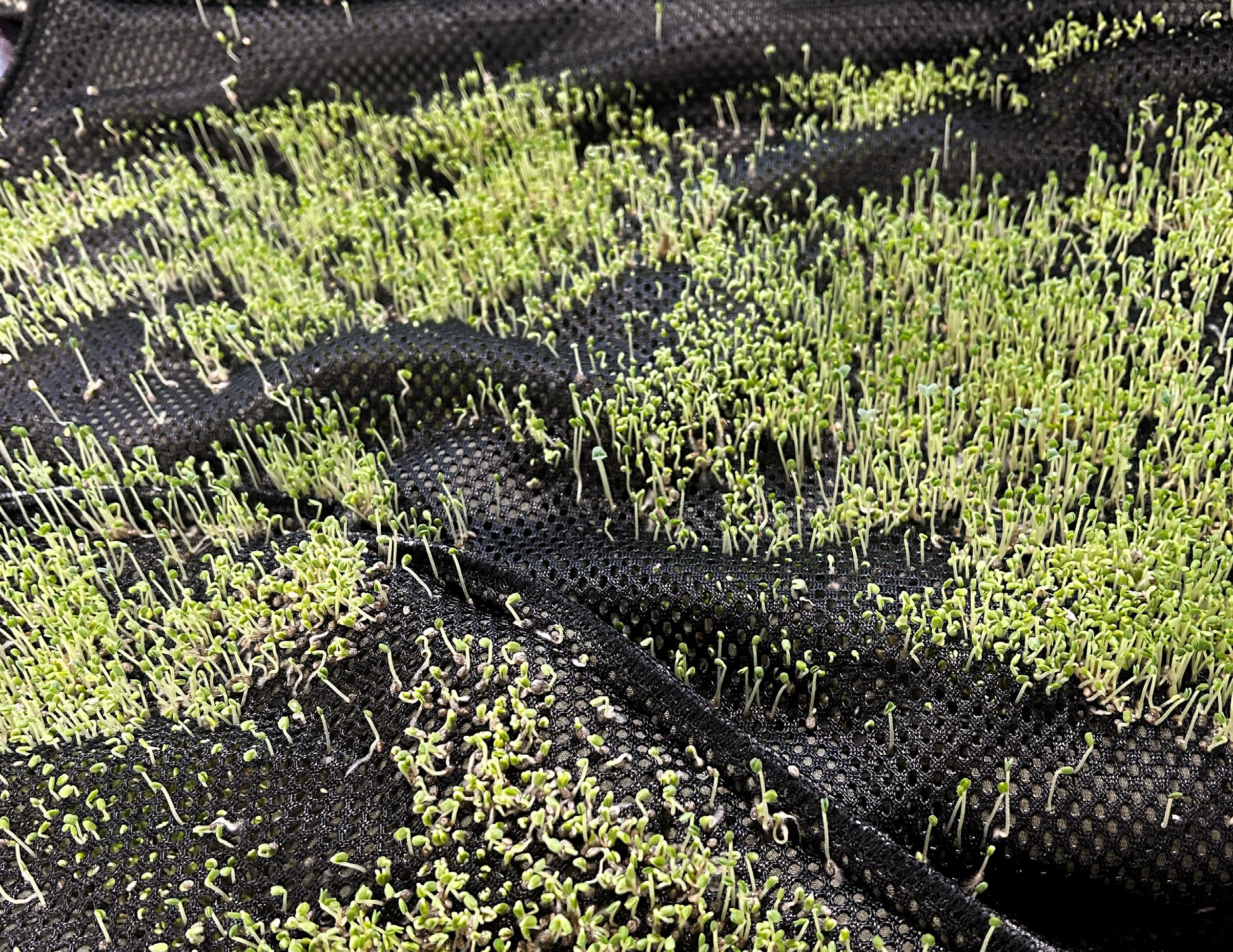Project Introduction
Verde Vanish is a ground-breaking fashion project that merges fashion's and plant life's vitality to emphasise our deep connection with nature. The project incorporates living plants as vivid symbols of the symbiotic relationship between humans and the environment. In the face of the escalating climate crisis, t he project aims to raise awareness of the crucial role of plants in maintaining the health of the planet and addressing environmental challenges.
The purpose of the project is a manifesto against the neglect of the environment, emphasising the urgency of addressing issues such as desertification, land degradation and loss of biodiversity. It aims to inspire a shift towards a more eco-conscious lifestyle, reminding us that our daily choices can have a significant impact on the health of the planet.
Project Introduction
The project is centred on a piece of clothing, planted with living plants, symbolizing the harmonious relationship between humans and nature. However, the narrative of this takes a turn, as it delves into the impact of human actions on climate change.

The process begins with nurturing the plants on the garment, a testament to the symbiotic bond between human creativity and natural beauty. This initial stage represents the potential of coexistence and balance. Yet, as the project progresses, it introduces factors that simulate the adverse effects of climate change - high temperatures, water scarcity, and acid rain, all consequences of human intervention. These conditions gradually take their toll on the once-thriving plants, leading to wilting, death, or damage, starkly illustrating the fragile nature of our environment under stress.
This transformation is meticulously documented, capturing the gradual degradation. The choice of clothing as the medium for this message is deliberate. Garments are an integral part of our daily lives, often taken for granted, much like our environment. The wear and tear on clothing over time draw a parallel to the gradual, often unnoticed, deterioration of our planet's health due to daily human activities.
It is more than a fashion statement; it's a mirror reflecting the impact of our everyday choices on the earth's climate. It's a visual and emotional representation of the urgent need for sustainability and environmental stewardship. The project aims to awaken a collective consciousness about the direct connection between our lifestyle, and the broader environmental challenges we face, urging a reevaluation of our role in shaping the future of our planet.
https://www.vogue.co.uk/fashion/article/loewe-ss22-menswear-plants
Seed Experiment
1.Chia seeds

soak the seeds- Friday night seed germination-Sunday morning (need 1-2 days to germinate)

Seeds Growing Leaves - Sunday of Week 2 (One week from germination to leaf growth) No added nutrients
Seed Experiment
Moss & Wheatgrass


Moss is commonly used for decorative purposes in gardens, greenhouses and landscaping. It can provide a natural and textured look to clothing surfaces.
Moss spores can be used to cultivate moss in specific areas or containers to create a custom design or landscape covered in moss. Gauze provides protection for plants at different stages of growth.
Wheatgrass is commonly grown from wheat seeds, which are soaked and then spread over a growing medium. It can be grown in trays or containers indoors or outdoors.
Seedling paper is often used for starting seeds indoors or for direct outdoor planting. It eliminates the need for transplanting as the seedlings grow directly from the paper.
Seed Experiment
Growing Medium




Cotton fabric or fibers can be used in hydroponic systems or as part of a soilless growing medium to provide physical support for plants. However, plants will still require proper nutrients through fertilizers or other means.
Cocopeat is a byproduct of coconut processing and is commonly used as a growing medium. It has good water retention properties and provides aeration to plant roots. While cocopeat itself does not contain significant nutrients, it can be enriched with nutrients by adding fertilizers.
Seed Experiment experiment




Materials and chia seed experiments
We started with a chia seed growth experiment using square shaped materials. We planted chia seeds on the planting sponge material of the filler layer and covered the top layer with mesh fabric to keep the planting layer material moist and observed the growth time of the chia seeds, which took about a week to grow from between the mesh holes
Clothing materials
Type of clothing


PANCAKE SEAM BOMBER JACKET.
Using the double layering to have an inner fabric to support the structure of our project, and a face fabric with a breathable membrane to grow out the plants.


BREATHABLE FABRIC EXAMPLE can be sourced from deadstock or from extremtextil.de
BREATHABLE FABRIC EXPLANATORY diagram: This type of fabric emphasises the conduction of air between layers.
Clothing materials
garment production




Patterns and Sewing
The type of garment we chose was a jacket with a filler layer that facilitated the termination of chia seeds and subsequent experiments.
Human intervention
1. Temperature rise

2. Drought & Heat

Temperature-Controlled Environment: Set up an environment with controlled temperature settings, mimicking high temperatures associated with climate change.
Heat Lamps or Infrared Lights: Use heat lamps or infrared lights to create localized warming effects on the clothing and plants. Observe the impact of elevated temperatures on plant growth and the clothing material. Document changes such as wilting, changes in color, or modifications in plant structure.
Controlled Watering Schedule: Gradually reduce the frequency and amount of water provided to the plants on the clothing, simulating drought conditions.
Soil Moisture Sensors: Use sensors to monitor soil moisture levels and adjust watering accordingly. Mimics the stress of water scarcity on plant growth. Document changes such as reduced growth, wilting, or changes in leaf appearance on the clothing.
Human intervention
3. Acid Rain

4. Pollution

praying Acidic Solution: Simulate acid rain by spraying a controlled, diluted acidic solution onto the clothing and plants.
Controlled pH Levels: Monitor and adjust the pH levels of the simulated rain to represent acid rain conditions.
Observe the impact of acid rain on plant health and the clothing material. Document changes in plant appearance and any visible damage to the fabric.
Airborne Particles: Introduce safe, lightweight particles to simulate air pollution. These particles can be dispersed in the air or attached to the clothing.
Water Pollution: Apply a controlled amount of a harmless colored liquid or solution to simulate water pollution. Monitor its impact on the clothing and plants.
Represents the deposition of pollutants on surfaces, including clothing and plants. Observe how the pollutants affect plant health and the appearance of the clothing.
Rendering

Final Presentation


Final Presentation


Conclusion
The inception of the Verde Vanish project stemmed from a profound contemplation of the intricate relationship between human actions and the environment. Initially conceived as a means to shed light on the pressing issue of climate change, my collaborators and I found ourselves undergoing a transformative journey as we delved deeper into the complexities of our interventions in nature.
As we embarked on the creative process, we were acutely aware of the potential unintended consequences of our actions. We grappled with the realization that even the smallest of interventions could disrupt the delicate balance of ecosystems. Faced with the sobering recognition that our efforts might inadvertently contribute to further environmental degradation, we made the conscious decision to halt any further manipulation of nature.
This decision was rooted in a profound acknowledgment of our own limitations and the inherent uncertainty surrounding the impact of our actions. Lacking the means to accurately assess the long-term repercussions of the
chemicals and tools we employed, we chose to preserve the project in its original form, untouched by additional human
interference.
Yet, this introspective journey led to a deeper revelation: a newfound understanding of the significant influence of human behavior on the health of the planet. Through moments of reflection, my team and I experienced a profound shift in perspective, recognizing the urgent need to awaken collective consciousness to the direct link between our lifestyles and the broader environmental challenges we face.
Thus, the project transcended its initial purpose, evolving into a powerful call to action. By challenging viewers to reassess their individual roles in shaping the future of the planet, Verde Vanish became a potent reminder of our shared responsibility towards environmental stewardship. Through its compelling narrative and evocative imagery, the project urges us to tread more lightly upon the Earth and embrace sustainable practices that safeguard the well-being of both present and future generations.
